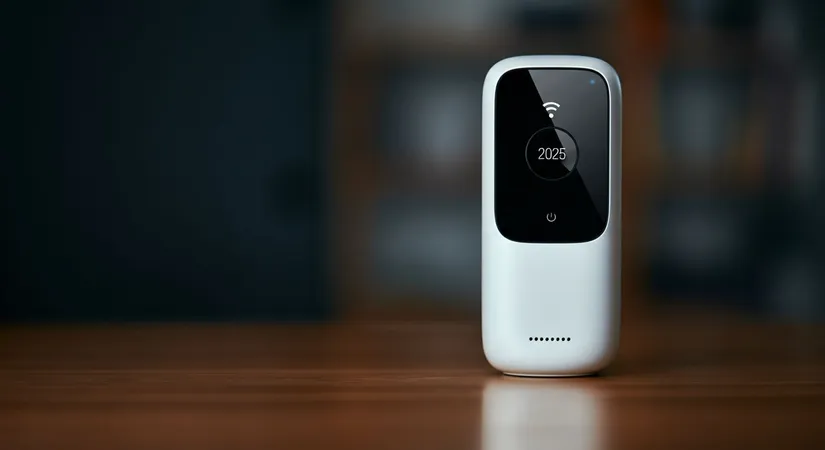
Transforming Rhinoplasty: How Modern Technology Enhances Results
Rhinoplasty, commonly known as a nose job, has undergone significant transformations over the years. With the advent of modern technology, the precision and outcomes of this surgical procedure have improved remarkably. Patients now experience enhanced results, quicker recovery times, and more personalized surgical plans. This article delves into the evolution of rhinoplasty techniques, the impact of advanced technology on surgical precision, patient experiences with modern tools in recovery, and future trends in rhinoplasty innovations.
Understanding the Evolution of Rhinoplasty Techniques
The Role of Modern Technology in Rhinoplasty
Modern technology has revolutionized rhinoplasty, transforming it from a manual craft into a precise science. With the advent of advanced imaging technologies, surgeons can now create detailed 3D models of a patient's nose. This allows for meticulous planning and execution, enhancing both aesthetic and functional outcomes. For instance, computer-assisted surgical tools enable surgeons to make more accurate incisions, reducing recovery time and improving results.
Key Technological Innovations in Rhinoplasty
- 3D Imaging: Provides detailed anatomical views for better surgical planning.
- Laser Technology: Offers precision in tissue cutting and reshaping.
- Robotic Assistance: Enhances surgical accuracy and reduces human error.
These innovations have not only improved the precision of rhinoplasty but also increased patient satisfaction by delivering predictable results. As technology continues to advance, the future of rhinoplasty looks promising, with potential for even more refined techniques and outcomes.
- Initial Consultation: Utilizes 3D imaging to visualize potential outcomes.
- Surgical Planning: Involves detailed mapping using computer-assisted tools.
- Execution: Employs advanced technologies like lasers for precise modifications.
This structured approach ensures that each step is optimized for the best possible results, reflecting the significant impact of modern technology on rhinoplasty procedures.

The Impact of Advanced Technology on Surgical Precision
Technological Advancements in Rhinoplasty
Modern technology has significantly enhanced surgical precision in rhinoplasty, transforming it into a highly accurate procedure. Advanced imaging techniques, such as 3D CT scans and MRI, offer surgeons comprehensive views of nasal structures, facilitating meticulous surgical planning. This precision is further augmented by computer-assisted tools, which enable exact incisions and adjustments, thereby minimizing complications and optimizing outcomes.
Benefits of Laser Technology in Rhinoplasty
- Controlled Tissue Removal: Lasers allow for precise tissue removal, reducing trauma.
- Enhanced Reshaping: Provides surgeons with the ability to sculpt with high accuracy.
- Reduced Recovery Time: Minimizes postoperative swelling and bruising.
These advancements not only improve aesthetic results but also decrease recovery time and the risk of postoperative complications, showcasing the profound impact of modern technology on rhinoplasty.
- Preoperative Imaging: Utilizes 3D scans for detailed surgical planning.
- Precision Surgery: Employs computer-assisted tools for accurate incisions.
- Postoperative Benefits: Results in faster recovery and fewer complications.
This structured approach highlights how modern technology is revolutionizing surgical precision, ensuring better outcomes for patients undergoing rhinoplasty.

Patient Experiences: The Role of Modern Tools in Recovery
Enhancing Recovery Through Modern Technology
The integration of modern technology in rhinoplasty has transformed the recovery process, making it more efficient and patient-friendly. Advanced surgical tools have minimized tissue trauma, leading to reduced swelling and bruising. This allows patients to resume their daily activities more quickly, enhancing their overall experience.
- Minimized Trauma: Advanced tools reduce tissue damage, speeding up recovery.
- Improved Patient Comfort: Less swelling and bruising enhance post-operative comfort.
- Faster Return to Routine: Patients can resume activities sooner, improving satisfaction.
These benefits highlight how modern technology is reshaping patient recovery, focusing on comfort and efficiency.
Digital Platforms: Revolutionizing Patient Engagement
Digital platforms have revolutionized patient engagement in rhinoplasty, offering new ways to interact with surgeons. Pre- and post-operative consultations can now be conducted online, providing convenience and flexibility. Additionally, 3D simulations allow patients to visualize expected outcomes, fostering better communication and realistic expectations.
- Virtual Consultations: Enable easy access to expert advice and follow-ups.
- 3D Simulations: Help patients understand potential results, enhancing decision-making.
- Improved Communication: Facilitates clearer discussions between patients and surgeons.
This digital transformation not only improves patient satisfaction but also ensures a more personalized and informed surgical journey.

Future Trends: What to Expect in Rhinoplasty Innovations
AI and the Future of Rhinoplasty
The integration of artificial intelligence (AI) into rhinoplasty is set to transform the field significantly. AI algorithms can analyze extensive datasets to predict surgical outcomes with remarkable accuracy. This capability allows surgeons to tailor procedures to individual patients, enhancing both precision and personalization. For example, AI can suggest optimal surgical techniques based on a patient's unique anatomical structure, improving both aesthetic and functional results.
- Data-Driven Insights: AI analyzes patient data to refine surgical plans.
- Personalized Techniques: Tailors procedures to individual anatomical needs.
- Enhanced Precision: Improves accuracy in predicting surgical outcomes.
These advancements promise to elevate the standards of rhinoplasty, making it more effective and accessible to a broader patient base.
Minimally Invasive Techniques and Biocompatible Materials
Future rhinoplasty innovations will also focus on minimally invasive techniques and the use of biocompatible materials. These developments aim to reduce recovery times and improve patient comfort. Minimally invasive procedures, such as endoscopic rhinoplasty, minimize tissue disruption, leading to quicker healing. Additionally, biocompatible materials used in nasal reconstruction offer enhanced integration with the body's natural tissues, reducing the risk of complications.
- Endoscopic Techniques: Utilize small incisions for less invasive procedures.
- Biocompatible Materials: Enhance tissue integration and reduce complications.
- Improved Recovery: Shortens healing time and increases patient comfort.
These innovations not only promise better outcomes but also make rhinoplasty more accessible and affordable, aligning with the latest tech innovations and technology trends of 2025.
Revolutionizing Rhinoplasty with 3D Imaging and Laser Technology
Enhancing Patient Recovery with Modern Rhinoplasty Techniques
Frequently Asked Questions
How has modern technology transformed rhinoplasty procedures?
What role does laser technology play in rhinoplasty?
How do digital platforms enhance patient engagement in rhinoplasty?
What future trends can we expect in rhinoplasty innovations?
How does modern technology impact patient recovery in rhinoplasty?
Discover the luxury and sustainability of Le Méridien Residences Bodrum. Contact us today for a free consultation!
📞 Call Now for Your Exclusive Consultation